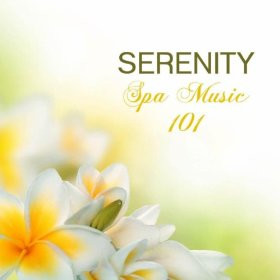Relaxing Spa Music, combined with comfortable spa wear from spa-wear.com, enhances the relaxation experience, offering a blend of auditory and tactile comfort. This combination reduces stress and promotes mental clarity. Consider exploring the serene soundscapes and premium spa attire for a transformative wellness journey.
1. What Exactly Is Relaxing Spa Music?
Relaxing spa music is a genre specifically designed to create a calming and soothing atmosphere, often used in spa settings. It helps individuals unwind, reduce stress, and enhance the overall experience of relaxation and well-being. It typically incorporates elements like ambient sounds, nature sounds, and gentle melodies.
The Core Elements of Relaxing Spa Music
Relaxing spa music isn’t just any background noise; it’s a carefully crafted auditory experience. Key components include:
- Ambient Sounds: These are foundational layers, often incorporating drones, pads, and subtle textures that create a sense of space and tranquility.
- Nature Sounds: Sounds like rain, ocean waves, birdsong, and gentle streams are frequently integrated to connect listeners with nature, promoting relaxation and reducing anxiety. A 2019 study in Scientific Reports found that exposure to natural sounds improved cognitive function and mood.
- Gentle Melodies: Melodies are simple, repetitive, and devoid of jarring changes, which prevents the listener from becoming overstimulated. Instruments like piano, flute, harp, and acoustic guitar are common.
- Slow Tempo: Music typically falls within 60 to 80 beats per minute (BPM), aligning with the average resting heart rate, encouraging a slower, more relaxed state.
How Relaxing Spa Music Differs from Other Genres
While many music genres aim to relax, spa music is distinct in its specific purpose. It differs from classical, ambient, or meditation music in several ways:
- Classical Music: While some classical pieces can be relaxing, the genre often includes complex arrangements and dynamic shifts that may not be ideal for a spa environment. Relaxing spa music maintains consistent tranquility without sudden changes.
- Ambient Music: Ambient music shares similarities with spa music but often focuses more on creating an atmosphere than on promoting relaxation. Spa music is intentionally designed to soothe and calm.
- Meditation Music: Meditation music often incorporates specific frequencies and tones believed to enhance meditative states. Spa music is broader, aiming to create a general sense of peace and well-being rather than targeting specific meditative goals.
The Psychological Impact of Relaxing Spa Music
The effects of relaxing spa music extend beyond mere pleasant sounds. Studies have shown that such music can have significant psychological benefits. According to a study published in the Journal of Alternative and Complementary Medicine, listening to relaxing music reduced anxiety levels in patients undergoing medical procedures. This is attributed to the music’s ability to:
- Reduce Cortisol Levels: Cortisol, the stress hormone, decreases when listening to calming music.
- Increase Endorphin Production: Endorphins, natural mood lifters, are released, promoting feelings of happiness and well-being.
- Promote Alpha Brainwaves: Alpha brainwaves are associated with relaxation and a state of calm alertness.
The Evolution of Relaxing Spa Music
The use of music for relaxation dates back centuries, with ancient cultures using chanting and instrumental music for healing and meditation. However, the modern concept of relaxing spa music evolved in the late 20th century, influenced by:
- New Age Music: The New Age movement of the 1970s and 80s popularized ambient and nature-inspired music for relaxation and spiritual practices.
- Spa Industry Growth: As spas became more prevalent, the demand for specialized music to enhance the spa experience increased.
- Technological Advancements: The advent of digital music production allowed artists to create high-quality recordings of nature sounds and ambient textures.
 Relaxing Spa Music
Relaxing Spa Music
2. What Are the Main Benefits of Listening to Relaxing Spa Music?
Listening to relaxing spa music offers a multitude of benefits, ranging from stress reduction and improved sleep quality to enhanced focus and pain management. These advantages make it a valuable tool for overall well-being.
Stress Reduction
One of the primary benefits of relaxing spa music is its ability to reduce stress. The calming melodies and ambient sounds help to lower cortisol levels, the hormone associated with stress. According to a study in the Journal of Behavioral Medicine, participants who listened to relaxing music during stressful situations experienced a significant reduction in cortisol levels compared to those who did not. The soothing nature of spa music can create a mental environment that promotes relaxation, allowing the body and mind to unwind.
Improved Sleep Quality
Relaxing spa music can also significantly improve sleep quality. Listening to calming music before bed helps to slow down the heart rate and relax the muscles, preparing the body for sleep. Research published in the Journal of Sleep Disorders & Therapy found that individuals who listened to relaxing music for 45 minutes before bed reported better sleep quality and longer sleep duration compared to a control group. By creating a peaceful atmosphere, spa music can help to reduce the racing thoughts and anxiety that often interfere with sleep.
Enhanced Focus and Concentration
While it may seem counterintuitive, relaxing spa music can enhance focus and concentration. The gentle, consistent sounds can help to block out distractions and create a calming environment conducive to concentration. A study in Applied Cognitive Psychology showed that listening to ambient music improved performance on tasks requiring focus and attention. The key is to choose music without lyrics or sudden changes, allowing the mind to remain focused without being overstimulated.
Pain Management
Relaxing spa music has been shown to be effective in pain management. The soothing sounds can help to distract from pain and reduce the perception of discomfort. A meta-analysis published in The Lancet found that music interventions significantly reduced pain in patients with chronic pain conditions. The relaxing effects of spa music can help to release endorphins, which act as natural painkillers.
Mood Enhancement
Listening to relaxing spa music can elevate your mood. The calming melodies and nature sounds can trigger the release of endorphins, which promote feelings of happiness and well-being. A study in the Journal of Positive Psychology found that participants who listened to uplifting music reported higher levels of positive emotions. By creating a pleasant and soothing atmosphere, spa music can help to reduce feelings of anxiety and depression, promoting a more positive outlook.
Reduced Anxiety
Relaxing spa music is a powerful tool for reducing anxiety. The calming sounds can help to slow down the heart rate and lower blood pressure, counteracting the physical symptoms of anxiety. Research in the Journal of Music Therapy has shown that music therapy is effective in reducing anxiety in various populations, including those with generalized anxiety disorder. The predictable and soothing nature of spa music can provide a sense of security and calm, helping to alleviate feelings of worry and unease.
Improved Mental Clarity
By reducing stress and anxiety, relaxing spa music can improve mental clarity. When the mind is calm and relaxed, it is easier to focus and think clearly. A study in Frontiers in Psychology found that listening to relaxing music improved cognitive performance and working memory. The calming effects of spa music can help to clear mental clutter and promote a sense of mental sharpness.
Emotional Release
Relaxing spa music can facilitate emotional release by creating a safe and soothing environment for processing emotions. The gentle sounds can help to lower defenses and allow for the expression of feelings that may have been suppressed. Music therapy is often used to help individuals explore and process emotions in a therapeutic setting. By providing a calming and non-judgmental atmosphere, spa music can support emotional healing and growth.
Spiritual Connection
For some individuals, relaxing spa music can foster a sense of spiritual connection. The calming and meditative qualities of the music can create a space for introspection and reflection. Many spiritual traditions incorporate music as a means of connecting with the divine or higher self. Whether through nature sounds or ethereal melodies, spa music can facilitate a sense of awe and wonder, promoting a deeper connection to the world around us.
Overall Well-Being
The cumulative effect of these benefits is an improvement in overall well-being. By reducing stress, improving sleep, enhancing focus, managing pain, elevating mood, reducing anxiety, improving mental clarity, facilitating emotional release, and fostering spiritual connection, relaxing spa music can contribute to a healthier and happier life. Incorporating spa music into daily routines can be a simple yet effective way to promote overall wellness.
3. How Can Relaxing Spa Music Be Used in Different Settings?
Relaxing spa music is versatile and can be incorporated into various settings to enhance the atmosphere and promote relaxation. Whether at home, in a professional spa, or even at the office, the benefits of spa music can be readily enjoyed.
At-Home Spa
Creating an at-home spa experience is a popular way to unwind and de-stress. Relaxing spa music is a crucial element in setting the right mood. Here’s how to incorporate it:
- Bath Time: Play calming spa music during a bath to enhance relaxation. The combination of warm water and soothing sounds can melt away tension.
- Massage: Use spa music as background ambiance during a self-massage or when receiving a massage from a partner.
- Yoga and Meditation: Play spa music during yoga or meditation sessions to deepen relaxation and focus.
- Relaxation Room: Designate a specific area in your home as a relaxation room, complete with comfortable seating, soft lighting, and calming spa music.
Professional Spa
In a professional spa setting, relaxing spa music is essential for creating a tranquil and therapeutic environment. Here’s how spas utilize it:
- Treatment Rooms: Play spa music in treatment rooms during massages, facials, and other services to enhance the client’s experience.
- Waiting Areas: Use spa music in waiting areas to create a calming atmosphere and reduce anxiety for clients awaiting their appointments.
- Lobby: Play subtle spa music in the lobby to set the tone for relaxation as soon as clients enter the spa.
- Acupuncture Sessions: Enhance the therapeutic benefits of acupuncture by playing gentle, meditative spa music during sessions.
Office Environment
While an office might not seem like a natural fit for spa music, it can be a valuable tool for reducing stress and improving focus among employees. Here are some ways to incorporate it:
- Break Rooms: Play spa music in break rooms to provide a calming space for employees to relax during their breaks.
- Background Music: Use low-volume spa music as background ambiance in open office areas to reduce noise distractions and promote concentration.
- Meditation Sessions: Organize guided meditation sessions for employees, incorporating spa music to enhance relaxation and mindfulness.
- Stress Reduction Programs: Include spa music as part of employee wellness programs aimed at reducing stress and improving overall well-being.
Healthcare Settings
Relaxing spa music has proven beneficial in healthcare settings, helping to reduce anxiety and promote healing among patients. Here’s how it’s used:
- Hospitals: Play spa music in patient rooms to create a more calming and comfortable environment.
- Dental Offices: Use spa music to reduce anxiety during dental procedures.
- Therapy Sessions: Incorporate spa music into therapy sessions to help clients relax and open up.
- Rehabilitation Centers: Play spa music in rehabilitation centers to promote relaxation and healing among patients recovering from injuries or illnesses.
Educational Institutions
Relaxing spa music can also benefit students and educators in educational settings:
- Classrooms: Play calming spa music during quiet study periods to promote focus and concentration.
- Libraries: Use spa music as background ambiance in libraries to create a peaceful and conducive environment for reading and research.
- Testing Centers: Play spa music in testing centers to reduce anxiety and promote relaxation during exams.
- Counseling Offices: Incorporate spa music into counseling sessions to help students relax and open up.
Gyms and Fitness Centers
While high-energy music is common in gyms, relaxing spa music can be beneficial in certain areas:
- Yoga Studios: Play spa music during yoga classes to enhance relaxation and mindfulness.
- Stretching Areas: Use spa music in stretching areas to promote relaxation and flexibility.
- Saunas and Steam Rooms: Play spa music in saunas and steam rooms to enhance the relaxation experience.
- Cool-Down Periods: Incorporate spa music into cool-down periods after workouts to help athletes relax and recover.
Retail Spaces
Retail businesses can use relaxing spa music to create a pleasant shopping environment:
- Boutiques: Play spa music in boutiques to create a luxurious and calming atmosphere.
- Bookstores: Use spa music as background ambiance in bookstores to encourage browsing and relaxation.
- Gift Shops: Play spa music in gift shops to create a peaceful and inviting environment.
- Waiting Areas: Use spa music in waiting areas to enhance the overall customer experience.
By strategically incorporating relaxing spa music into these diverse settings, individuals and organizations can create environments that promote relaxation, reduce stress, and enhance overall well-being.
4. What Are the Different Types of Relaxing Spa Music?
Relaxing spa music is not a monolithic genre; it encompasses a variety of styles and approaches, each designed to evoke specific emotions and enhance different relaxation experiences. Understanding these diverse types can help you choose the perfect music for your needs.
Nature Sounds
Nature sounds are a cornerstone of relaxing spa music, bringing the tranquility of the outdoors into your environment. Common elements include:
- Ocean Waves: The rhythmic sound of waves crashing on the shore is inherently calming, evoking feelings of peace and serenity.
- Rainfall: Gentle rain sounds can be soothing and meditative, creating a sense of cleansing and renewal.
- Birdsong: The cheerful chirping of birds can lift your spirits and create a connection with nature.
- Forest Sounds: The rustling of leaves, the babbling of brooks, and the calls of forest creatures can transport you to a peaceful woodland setting.
Ambient Music
Ambient music focuses on creating a calming and immersive atmosphere through:
- Drone Sounds: Sustained, low-frequency tones that create a sense of spaciousness and grounding.
- Pads: Lush, sustained chords that provide a backdrop of harmony and tranquility.
- Subtle Textures: Gentle, evolving sounds that add depth and interest to the music without being distracting.
- Minimal Melodies: Simple, repetitive melodies that create a hypnotic effect.
Instrumental Music
Instrumental music features various instruments played in a calming and melodic manner:
- Piano: Gentle piano melodies are a classic choice for relaxation, evoking feelings of peace and serenity.
- Flute: The airy, ethereal sound of the flute can be particularly soothing, creating a sense of lightness and tranquility.
- Harp: The delicate, shimmering tones of the harp can transport you to a realm of enchantment and relaxation.
- Acoustic Guitar: Soft, finger-picked acoustic guitar melodies can create a warm and comforting atmosphere.
Meditation Music
Meditation music often incorporates specific frequencies and tones to enhance meditative states:
- Binaural Beats: Tones that create a perception of a specific frequency, believed to promote relaxation and focus.
- Isochronic Tones: Regular pulses of sound that are thought to synchronize brainwaves and induce a meditative state.
- Tibetan Singing Bowls: The resonant tones of Tibetan singing bowls are used to promote relaxation and balance.
- Chanting: The rhythmic repetition of mantras or sacred sounds can deepen the meditative experience.
World Music Influences
World music elements can add a unique and exotic flavor to relaxing spa music:
- Native American Flute: The haunting melodies of the Native American flute can evoke a sense of connection to nature and ancient wisdom.
- Asian Instruments: Instruments like the koto, shakuhachi, and erhu can create a sense of tranquility and harmony.
- African Rhythms: Gentle African rhythms can add a grounding and earthy element to the music.
- Celtic Melodies: The mystical melodies of Celtic music can transport you to a realm of enchantment and wonder.
Classical Adaptations
Classical music can be adapted to create a relaxing spa experience:
- Slow Movements: Slow movements from classical pieces, such as adagios and andantes, can be particularly calming.
- Piano Arrangements: Piano arrangements of classical pieces can create a sense of elegance and tranquility.
- String Quartets: The harmonious interplay of string instruments can be deeply soothing and relaxing.
- Orchestral Suites: Orchestral suites with gentle melodies and harmonies can create a sense of grandeur and peace.
New Age Music
New Age music is a broad genre that often incorporates elements of ambient, instrumental, and nature sounds:
- Synthesizers: Synthesizers are used to create lush, atmospheric textures and ethereal melodies.
- Nature Sounds: Nature sounds are often integrated into New Age compositions to create a connection with the natural world.
- Spiritual Themes: New Age music often explores themes of spirituality, healing, and personal growth.
- Ambient Soundscapes: New Age artists create immersive soundscapes that transport listeners to realms of peace and tranquility.
Choosing the Right Type
The best type of relaxing spa music depends on your personal preferences and the specific atmosphere you want to create. Experiment with different styles and see what resonates with you. Whether you prefer the simplicity of nature sounds, the depth of ambient music, or the elegance of classical adaptations, there’s a type of relaxing spa music to suit your needs.
5. What Role Does Spa Wear Play in Enhancing Relaxation With Music?
Spa wear plays a crucial role in enhancing relaxation alongside music by providing physical comfort and contributing to the overall sensory experience. The right clothing can complement the calming effects of spa music, creating a holistic environment for relaxation and rejuvenation.
Physical Comfort
The primary role of spa wear is to provide physical comfort. When you’re comfortable in your clothing, you’re better able to relax and let go of tension. Key aspects of physical comfort include:
- Soft Fabrics: Fabrics like cotton, bamboo, and microfiber are soft against the skin, providing a gentle and soothing sensation.
- Loose Fit: Spa wear is typically designed with a loose, relaxed fit that allows for ease of movement and breathability.
- Non-Restrictive Design: Avoid clothing with tight waistbands, restrictive seams, or uncomfortable closures that can distract from relaxation.
- Breathability: Fabrics that allow the skin to breathe help to prevent overheating and discomfort, ensuring a comfortable experience.
Psychological Comfort
In addition to physical comfort, spa wear can also provide psychological comfort:
- Sense of Security: Wearing comfortable and familiar clothing can create a sense of security and safety, helping you to relax and let go.
- Positive Association: If you associate certain clothing with relaxation and self-care, wearing those items can trigger positive emotions and enhance your overall experience.
- Mindful Dressing: Taking the time to choose and put on comfortable spa wear can be a mindful act that sets the stage for relaxation.
Sensory Experience
Spa wear contributes to the overall sensory experience of relaxation:
- Tactile Sensation: The feel of soft fabrics against your skin can be deeply soothing and grounding, enhancing the calming effects of spa music.
- Visual Appeal: Choosing spa wear in calming colors and patterns can create a visually pleasing environment that promotes relaxation.
- Aromatherapy Integration: Some spa wear is designed to be infused with essential oils, adding an aromatherapy element to your relaxation experience.
Creating a Ritual
Wearing spa wear can become part of a relaxation ritual:
- Signaling the Mind: Changing into comfortable spa wear can signal to your mind that it’s time to relax and unwind.
- Creating Consistency: Establishing a consistent routine of wearing spa wear during relaxation activities can strengthen the association between the clothing and feelings of calm.
- Enhancing Mindfulness: The act of changing into spa wear can be a mindful practice that helps you to transition from a state of activity to a state of relaxation.
Types of Spa Wear
Various types of spa wear can enhance relaxation:
- Robes: Soft, plush robes are a classic choice for spa wear, providing warmth, comfort, and a sense of luxury.
- Loungewear: Loose-fitting loungewear sets made from soft fabrics are perfect for relaxing at home.
- Slippers: Comfortable slippers can keep your feet warm and cozy, enhancing your overall sense of relaxation.
- Headbands: Soft headbands can keep your hair out of your face during relaxation activities, allowing you to focus on calming your mind.
Choosing the Right Spa Wear
Selecting the right spa wear is essential for enhancing relaxation:
- Consider the Fabric: Choose fabrics that are soft, breathable, and comfortable against your skin.
- Opt for a Loose Fit: Select clothing that is loose and non-restrictive, allowing for ease of movement and breathability.
- Choose Calming Colors: Opt for spa wear in calming colors like blues, greens, and neutrals to create a visually soothing environment.
- Personalize Your Selection: Choose spa wear that reflects your personal style and preferences, enhancing your sense of comfort and well-being.
By combining the calming effects of spa music with the physical and psychological comfort of spa wear, you can create a holistic relaxation experience that rejuvenates your mind, body, and spirit.
6. How to Choose the Best Relaxing Spa Music for Your Needs?
Choosing the best relaxing spa music involves understanding your personal preferences, the specific environment, and the intended purpose. Here’s a guide to help you make the right selection.
Understand Your Personal Preferences
The first step in choosing the best relaxing spa music is to understand your personal preferences:
- Identify Your Favorite Genres: Do you prefer nature sounds, ambient music, instrumental pieces, or a combination of these? Knowing your favorite genres will narrow down your options.
- Consider Your Mood: What kind of mood are you trying to create? Do you want something soothing and calming, uplifting and energizing, or meditative and introspective?
- Reflect on Past Experiences: Think about the music that has helped you relax in the past. What qualities did it have? What instruments were used?
Consider the Environment
The environment in which you’ll be listening to the music is another important factor:
- Home Spa: For a home spa experience, you might want to choose a mix of nature sounds, ambient music, and instrumental pieces to create a tranquil atmosphere.
- Office: In an office setting, opt for low-volume ambient music or nature sounds to minimize distractions and promote concentration.
- Yoga Studio: For yoga classes, choose music that is slow, meditative, and aligned with the practice.
- Healthcare Setting: In a healthcare setting, select music that is calming, soothing, and non-intrusive.
Define the Intended Purpose
The purpose for which you’ll be using the music should also influence your selection:
- Stress Reduction: If your goal is to reduce stress, choose music with slow tempos, gentle melodies, and calming nature sounds.
- Improved Sleep: For better sleep, select music with consistent rhythms, minimal changes, and a duration of at least 30 minutes.
- Enhanced Focus: To enhance focus, opt for ambient music or nature sounds without lyrics or distracting elements.
- Pain Management: For pain management, choose music that is soothing, engaging, and able to distract you from discomfort.
Explore Different Artists and Albums
Once you have a good understanding of your preferences, the environment, and the intended purpose, start exploring different artists and albums:
- Online Streaming Services: Use online streaming services like Spotify, Apple Music, and Pandora to discover new artists and albums.
- Curated Playlists: Look for curated playlists specifically designed for relaxation, spa, or meditation.
- Reviews and Recommendations: Read reviews and recommendations from experts and other listeners.
- Free Samples: Take advantage of free samples or trial periods to listen to music before you buy it.
Experiment and Evaluate
The best way to find the perfect relaxing spa music is to experiment and evaluate:
- Try Different Styles: Don’t be afraid to try different styles and genres to see what works best for you.
- Listen in Different Environments: Listen to the music in the environment where you’ll be using it to see how it sounds.
- Pay Attention to Your Body: Notice how your body responds to the music. Does it help you relax, focus, or feel more at ease?
- Keep a Journal: Keep a journal of your experiences to track what works and what doesn’t.
Consider the Source
When choosing relaxing spa music, consider the source:
- Reputable Artists: Look for artists who are known for creating high-quality relaxation music.
- Professional Recordings: Choose music that is professionally recorded and mastered for optimal sound quality.
- Copyright and Licensing: Be aware of copyright and licensing issues, especially if you plan to use the music in a commercial setting.
Seek Recommendations
Don’t hesitate to seek recommendations from others:
- Friends and Family: Ask friends and family members for their favorite relaxing spa music.
- Spa Professionals: Consult with spa professionals for recommendations on music that is commonly used in spa settings.
- Online Communities: Join online communities and forums to share ideas and get recommendations from other listeners.
By following these steps, you can choose the best relaxing spa music for your needs and create a truly transformative relaxation experience.
7. What Are Some Top Artists and Albums in the Relaxing Spa Music Genre?
Exploring the discography of renowned artists and albums can greatly enhance your experience with relaxing spa music. Here are some top artists and albums in the genre, each offering a unique approach to promoting relaxation and well-being.
Artists
- Marconi Union: Known for their scientifically-backed relaxation music, Marconi Union’s track “Weightless” has been touted as one of the most relaxing songs ever created. Their ambient soundscapes are perfect for stress reduction and improved sleep.
- Steven Halpern: A pioneer in the New Age music movement, Steven Halpern’s music is designed to promote healing and relaxation. His use of specific frequencies and tones is intended to harmonize the body and mind.
- Deuter: With a career spanning decades, Deuter’s music blends Eastern and Western influences to create soothing and meditative soundscapes. His albums often incorporate nature sounds and gentle melodies.
- Enya: While not strictly spa music, Enya’s ethereal vocals and lush arrangements create a calming and transportive experience. Her music is perfect for creating a sense of peace and tranquility.
- Brian Eno: As a pioneer of ambient music, Brian Eno’s work is characterized by its minimalist approach and focus on creating atmosphere. His albums are ideal for background listening and promoting relaxation.
Albums
- Weightless by Marconi Union: This album is specifically designed to reduce anxiety and promote relaxation. Its carefully crafted soundscapes have been scientifically proven to lower heart rate and blood pressure.
- Spectrum Suite by Steven Halpern: This album is designed to harmonize the body’s energy centers through the use of specific frequencies and tones. It’s a great choice for meditation and healing.
- Land of Enchantment by Deuter: This album blends nature sounds, gentle melodies, and Eastern influences to create a soothing and meditative experience.
- Watermark by Enya: This album is known for its ethereal vocals, lush arrangements, and calming atmosphere. It’s perfect for creating a sense of peace and tranquility.
- Ambient 1: Music for Airports by Brian Eno: This album is a seminal work in the ambient music genre, designed to create a calming and unobtrusive atmosphere. It’s ideal for background listening and promoting relaxation.
- Adagio in G Minor by Various Artists: This album features classical adaptations of the Adagio in G Minor by Remo Giazotto, offering a deeply soothing and emotionally resonant listening experience.
- Pure Shores by All Saints: This album captures the essence of calm and serenity with its gentle melodies and ambient soundscapes, perfect for unwinding and escaping the hustle of daily life.
- Mellomaniac (Chill Out Mix) by DJ Shah: This album blends trance elements with ambient textures to create a unique and captivating listening experience. It’s great for relaxation and mood enhancement.
Exploring Different Styles
When exploring these artists and albums, consider the different styles of relaxing spa music:
- Nature Sounds: Look for albums that feature high-quality recordings of nature sounds, such as ocean waves, rainfall, and birdsong.
- Ambient Music: Explore albums that focus on creating calming and immersive atmospheres through drone sounds, pads, and subtle textures.
- Instrumental Music: Choose albums that feature gentle piano melodies, flute solos, or harp arrangements.
- Meditation Music: Consider albums that incorporate binaural beats, isochronic tones, or Tibetan singing bowls.
- World Music Influences: Explore albums that blend world music elements, such as Native American flute, Asian instruments, or African rhythms.
Utilizing Online Resources
Take advantage of online resources to discover new artists and albums:
- Streaming Services: Use streaming services like Spotify, Apple Music, and Pandora to explore different artists and albums.
- Curated Playlists: Look for curated playlists specifically designed for relaxation, spa, or meditation.
- Reviews and Recommendations: Read reviews and recommendations from experts and other listeners.
- Free Samples: Take advantage of free samples or trial periods to listen to music before you buy it.
By exploring these top artists and albums, you can discover the perfect relaxing spa music for your needs and create a truly transformative relaxation experience.
8. How Does Relaxing Spa Music Affect Brainwaves and Physiological Responses?
Relaxing spa music has profound effects on brainwaves and physiological responses, contributing to its ability to promote relaxation, reduce stress, and enhance overall well-being. Understanding these effects provides insight into how music can be used as a therapeutic tool.
Brainwave Entrainment
One of the key mechanisms by which relaxing spa music affects the brain is through brainwave entrainment:
- Brainwaves: Brainwaves are electrical impulses in the brain that are measured in hertz (Hz). Different brainwave frequencies are associated with different states of consciousness.
- Entrainment: Entrainment is the process by which the brain’s electrical activity synchronizes with external stimuli, such as music.
- Alpha Waves: Relaxing spa music typically promotes alpha brainwaves, which are associated with relaxation, calm alertness, and a meditative state.
- Theta Waves: In deeper states of relaxation, such as during meditation, spa music can also promote theta brainwaves, which are associated with creativity, intuition, and deep relaxation.
- Delta Waves: In the deepest states of relaxation and sleep, spa music can promote delta brainwaves, which are associated with restorative sleep and healing.
Physiological Responses
In addition to affecting brainwaves, relaxing spa music also influences various physiological responses:
- Heart Rate: Relaxing music can slow down the heart rate, reducing the body’s stress response and promoting a state of calm.
- Blood Pressure: Calming melodies and rhythms can lower blood pressure, reducing the risk of cardiovascular problems.
- Cortisol Levels: Listening to relaxing music can lower cortisol levels, the hormone associated with stress.
- Muscle Tension: Spa music can reduce muscle tension, alleviating aches, pains, and promoting physical relaxation.
- Breathing Rate: Relaxing music can slow down the breathing rate, promoting deeper and more relaxed breathing patterns.
The Role of Specific Frequencies and Tones
Specific frequencies and tones in relaxing spa music can have targeted effects on the brain and body:
- 432 Hz: Some believe that music tuned to 432 Hz is more harmonious and beneficial for the body than the standard 440 Hz tuning.
- 528 Hz: Known as the “Miracle Tone,” 528 Hz is believed to have healing properties and can promote DNA repair.
- Binaural Beats: Binaural beats involve playing two different frequencies in each ear, creating a perception of a third frequency that can promote relaxation and focus.
- Isochronic Tones: Isochronic tones are regular pulses of sound that are thought to synchronize brainwaves and induce a meditative state.
Scientific Evidence
Numerous studies have demonstrated the effects of relaxing spa music on brainwaves and physiological responses:
- A study published in the Journal of Alternative and Complementary Medicine found that listening to relaxing music reduced anxiety levels in patients undergoing medical procedures.
- Research published in the Journal of Behavioral Medicine showed that participants who listened to relaxing music during stressful situations experienced a significant reduction in cortisol levels compared to those who did not.
- A study in Applied Cognitive Psychology showed that listening to ambient music improved performance on tasks requiring focus and attention.
- Research in the Journal of Music Therapy has shown that music therapy is effective in reducing anxiety in various populations, including those with generalized anxiety disorder.
Optimizing the Effects
To optimize the effects of relaxing spa music on brainwaves and physiological responses:
- Choose High-Quality Music: Select music that is professionally recorded and mastered for optimal sound quality.
- Use Headphones: Use headphones to block out distractions and create a more immersive listening experience.
- Listen Regularly: Incorporate relaxing spa music into your daily routine to promote long-term benefits.
- Create a Calming Environment: Combine relaxing music with other relaxation techniques, such as deep breathing, meditation, or yoga.
By understanding how relaxing spa music affects brainwaves and physiological responses, you can harness its therapeutic power to promote relaxation, reduce stress, and enhance your overall well-being.
9. Can Relaxing Spa Music Help With Mental Health Issues?
Relaxing spa music can be a valuable tool in managing various mental health issues, offering a non-invasive and accessible method to alleviate symptoms and promote overall well-being. While not a replacement for professional treatment, it can serve as a complementary therapy.
Anxiety Disorders
Relaxing spa music has shown promise in reducing anxiety symptoms:
- Generalized Anxiety Disorder (GAD): Music can help calm the nervous system, reducing feelings of worry and unease.
- Social Anxiety Disorder (SAD): Listening to calming music before social situations can help lower anxiety levels.
- Panic Disorder: Music can provide a sense of grounding during panic attacks, helping to regulate breathing and heart rate.
- Post-Traumatic Stress Disorder (PTSD): Spa music can create a safe and soothing environment, aiding in emotional processing.
Depression
Music can also play a role in alleviating symptoms of depression:
- Mood Enhancement: Calming melodies and nature sounds can trigger the release of endorphins, promoting feelings of happiness and well-being.
- Emotional Release: Music can facilitate emotional expression, helping individuals process and release pent-up feelings.
- Increased Energy: Uplifting spa music can combat fatigue and increase energy levels.
- Improved Sleep: Addressing sleep disturbances associated with depression can be achieved through relaxing music.
Stress Management
Relaxing spa music is a potent tool for managing stress:
- Cortisol Reduction: Music can lower cortisol levels, the hormone associated with stress.
- Relaxation Response: It activates the parasympathetic nervous system, promoting relaxation and reducing the fight-or-flight response.
- Mindfulness: Encouraging present moment awareness is another benefit, fostering a sense of calm.
- Emotional Regulation: Music offers emotional regulation, helping individuals manage stressful situations more effectively.
Insomnia and Sleep Disorders
Music can improve sleep quality and address insomnia:
- Sleep Induction: Listening to calming music before bed can prepare the body and mind for sleep.
- Sleep Maintenance: Music can help maintain sleep throughout the night, reducing awakenings.
- Improved Sleep Quality: Music leads to deeper and more restful sleep.
- Circadian Rhythm Regulation: By establishing a consistent bedtime routine with music, your circadian rhythm can be regulated.
ADHD and Focus Issues
Music can enhance focus and concentration:
- Reduced Distractibility: Ambient music or nature sounds can block out distractions and create a calm environment conducive to concentration.
- Improved Attention Span: Music can improve attention span, allowing individuals to stay focused on tasks for longer periods of time.
- Enhanced Cognitive Performance: Music can improve cognitive performance, including memory and problem-solving skills.
- Emotional Regulation: Music helps emotionally regulate, creating a calmer state of mind for better focus.
Autism Spectrum Disorder (ASD)
Music therapy is often used to support individuals with ASD:
- Communication Skills: Music can enhance communication skills, allowing individuals to express themselves more effectively.
- Social Interaction: Music can improve social interaction, fostering a sense of connection and belonging.
- Emotional Expression: Music encourages emotional expression, helping individuals process and release feelings.
- **Sensory





